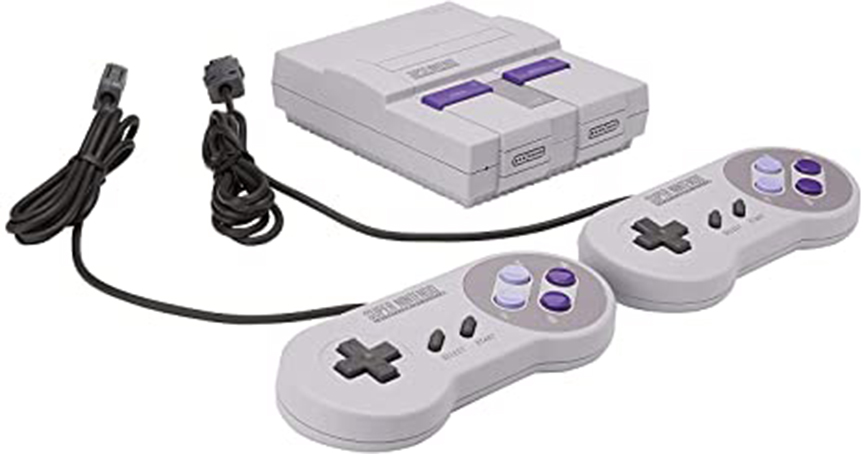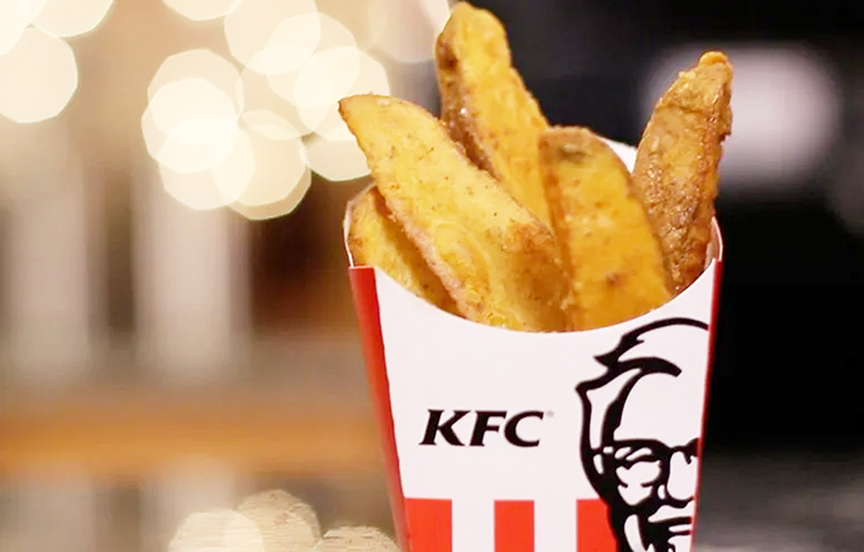By Thomas Sellers Jr.
If you’re reading this… May I borrow $500?
Better yet, can I hold about $700? I’m ready to invest into my entertainment future with the Sony PlayStation 5. The next generation of video game consoles is here and it seems a lot of my friends have purchased one to secure some form of joy just in case they have to quarantine sometime during 2021.
I don’t want to be left behind in the struggle. The latest console in my home if the Nintendo Wii. Thanks to by baby brother Carlos I have the system, Wii Sports and Mario Kart Wii. But I can admit my taste in video games is a little outdated.
When company comes over to my home, they think my console is from the 1970s. I quickly correct them and let them know it’s not Magnavox Odyssey from 1972. I would at least have the second generation console Atari or upgrade to the third generation console Nintendo. Duck Hunt anyone?
As the ninth generation of consoles are dominating the market and developers are busy working on new concepts, graphics and improved interactions with gaming, I’ll go down memory lane.
The Best Sellers’ List this week is going to countdown my top 10 video game consoles of all time. Most of these systems I owned at one point.
This soon-to-be 40 year old’s gaming days are long behind me. If you’re over the age of 25 and you play video games religiously, you need a reality check soon. You better be receiving a paycheck as an official gamer. Or do like my dad did, have three sons giving you an excuse to buy video games into your 40s.
- PlayStation (1994)
My family was always a little behind in the video game trend in the 1990s. By the mid-90s we were busy playing Sega and Nintendo. It wasn’t until about 1997 we found out about the Sony PlayStation. Sony’s hardware developer Ken Kutaragi pushed to make a console around 1993. He played the level past 8-bit and 16-bit. He was going for a 3D look.
The resulting console ruled the 1990s and eventually made its way into the Sellers’ household. Visually it was rough around the edges but I did enjoy a more 3D look with games like Tekken. - Xbox (2001)
When tech icon Bill Gates gives you an introduction, you have to live up to the hype. And the system of the new millennium lived up to his introduction from Gates at the 2000 Game Developers’ Conference.
The origin of the Xbox was conceived by the team behind Direct X, Microsoft’s middleware for PC game developers, as a technological Trojan horse to get the company’s products into the living room. Graphics were going to be essential for this console. Selection of games and licensing was going to be vital. But what put Xbox into another stratosphere was the on-line element. And now for the past 20 years we have develop the industry of gamers.
I am not a gamer but I have played a couple of family members via the Xbox while we both were in Memphis. Xbox was enjoyable for me because of the Madden series. I thank my brother Carlos for buying the system so I could experience it. - PlayStation 4 (2013)
Another system purchased by my brother a few years later was the PlayStation 4. He faced a tough decision at the time. Should he buy the new Xbox One or the PS4?
Of course I was no help during his spiritual journey to buying he latest system of entertainment. Carlos did his research. He discovered the PS4 had great controllers, improved online infrastructure and seamless sharing and streaming functions. All I know was the fighting games on the system were awesome and I was competitive against people who played the games frequently. The PlayStation 4 is still going strong with a variety of titles. As of November 2020, cumulative sales of Sony’s PS4 had risen to more than 114 million units. - Nintendo GameCube (2001)
One system that didn’t sweep the nation was the GameCube. At the turn of the century and millennium, Nintendo offered the “Purple Box.” Nintendo sold 22 million GameCube units worldwide during its lifespan. The numbers were behind the competition Xbox’s 24 million and PS2’s 155 million. The GameCube wasn’t as successful as the N64 but if you had this console in your home you enjoyed hours of gameplay.
The look of the GameCube was child-like and didn’t have all the capabilities of the competition. The Cube featured an IBM PowerPC processor, underpowered compared to Microsoft’s machine. But what made the GameCube fun was it was the last of a dying breed. It was the last console focusing on a variety of titles and playing video games at home with family and friends. We enjoyed playing Metroid Prime, Legend of Zelda: Wind Waker, Resident Evil 4 and Super Mario Sunshine. My person favorite was NCAA College Football 2003. - Sega Dreamcast (1998)
Another forgotten jewel in the history of consoles is the Dreamcast. Was it all a dream? Did this system really hit homes back in the late 1990s. The Dreamcast was released in the United States in 1999 and eventually sold about 9.13 million units.
The Dreamcast had a new generation look, detailed controllers and easy gameplay. NCAA College Football 2K2 and SoulCalibur stole hours of my life via the Dreamcast. During my college years to release stress I headed to my Dreamcast to pop in these two titles. The graphics were beautiful and enticing. I miss playing this system from time to time. - Nintendo Wii (2006)
Now we hit the point of this countdown I shine a spotlight on the only console I still own and play in my home. The Nintendo Wii allows me a platform to be a kid and relax after a long day.
To truly enjoy a Wii you need a few parts. I own the tennis racket and steering wheel. You will also need space and energy to play the Wii. Keep your motion detector in a good space so you won’t have any wasted movement. Oh yeah, I keep a pack of Double A batteries for my controllers. I love Wii Fit and Wii Play. But I will challenge anybody to Wii Sports. And we will play 18 holes of Wii Golf.
Wii bought families together and can be the centerpiece of a fun party. That helped the console sell 100 million units worldwide. - Sega Genesis (1988)
Quality over quantity is usually a rule in my life. But in the case of the Sega Genesis, the quantity of games at a more affordable price was awesome.
Back in the early 90s, I was like any other kid with both primary systems in his room. Shopping at K-Mart or Walmart, I went into my sales pitch on why my mother should buy me the $50 or $40 game on one side of the isle. She looks over to the Sega side of the toy section seeing games for $10, $20 and maybe $30 bucks.
“I’ll buy you four of these games if you will shut up,” would be the counter from my mom. I couldn’t argue with leaving the store four game richer. We would shake hands and both winners.
Sega had an edge and was more like the MTV generation of rocking. Sega Genesis’ advertising campaign made you feel like you had to have the system to be cool. I felt cool playing Mortal Kombat, Madden ’96 and various other titles. - Nintendo 64 (1996)
While most video systems were switching over to the CD-rom format, the N64 was still a cartridge. The system held it’s own with more than 32.93 million units across the world sold. Closer to home, we picked up more than 20 million units in North America.
The N64 featured quality titles like Super Mario 64, Kobe Bryant Courtside, WCW Revenge and WWF Wrestlemania 2000. The N64 had a good run for about 5 years.
Other iconic titles for the system were GoldenEye, Banjo-Kazooie, Wave Race 64 and Legend of Zelda: Ocarina of Time. The Nintendo 64 had all the smooth graphics, 3D courses and futuristic elements we’ve grown common with today. - PlayStation 2 (2000)
I did not fall in love with the PlayStation. The graphics were OK and the loading seem to take forever. But in the new millennium I went to buy the new PlayStation 2 to give Sony another chance. Buying the PS2 was one of the best decisions of my life
Needing an updated system for the new college football games, I invested in the PS2. Quickly my brothers Carlos and Cordarous talked me into buying the latest fighting games, a couple of first-person shooters and a couple of adventure games. Afternoons at Funcoland, I would buy me one game a month and grab them about three to four. While I spent days making sure my season was a masterpiece of perfection, my brothers had cool points at school being able to play all the trendy games.
This was the golden era of mainstream blockbusters like Grand Theft Auto, Metal Gear Solid, Gran Turismo and Burnout. We didn’t get into Guitar Hero but we played at somebody else’s house. The PlayStation also allowed you to play movies and music. It was a one-stop shop. - Super Nintendo (1990)
Two main reasons this legendary system is the best of all time: I was 10-years-old and Bill Walsh College Football ’94. Oh yeah, I almost forgot Super Mario World, Bulls vs. Blazers, Super Street Fighter 2, Street Fighter 2 Turbo and the gold standard Super Mario Kart.
This system gave us Yoshi. I cannot express all the greatness of the Super Nintendo. I challenge any parent to buy the system and allow their children to play it. They will love it too and enjoy the graphics. The simplicity of the controllers will be a well-enjoyed break for them. And they marvel at the fact you can turn off the game and the stopping point will still be there.
The Super Nintendo had something for everyone like Legend of Zelda: a Link to the Past, Super Metroid and Secret of Mana. Some would play Yoshi’s Island and Harvest Moon. The SNES featured the Super Star Wars series and Donkey Kong games. And we all felt we had magic powers taking out a cartridge and giving it a quick blow to regenerate the fun.
THOMAS SELLERS JR. is the editor of The Millington Star and both the sports editor and a weekly personal columnist for West 10 Media/Magic Valley Publishing. Contact him by phone at (901) 433-9138, by fax to (901) 529-7687 and by email to [email protected].







